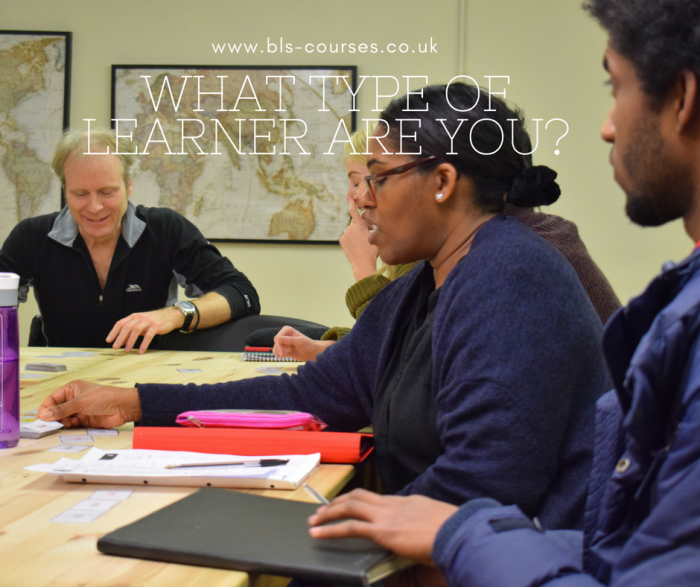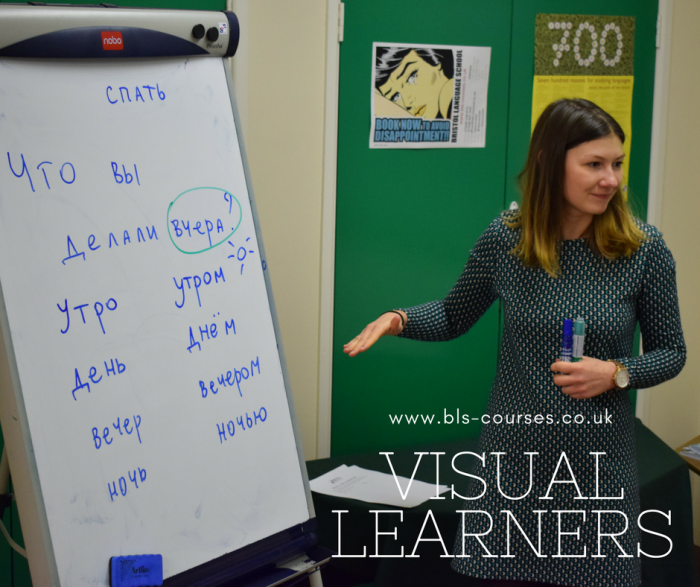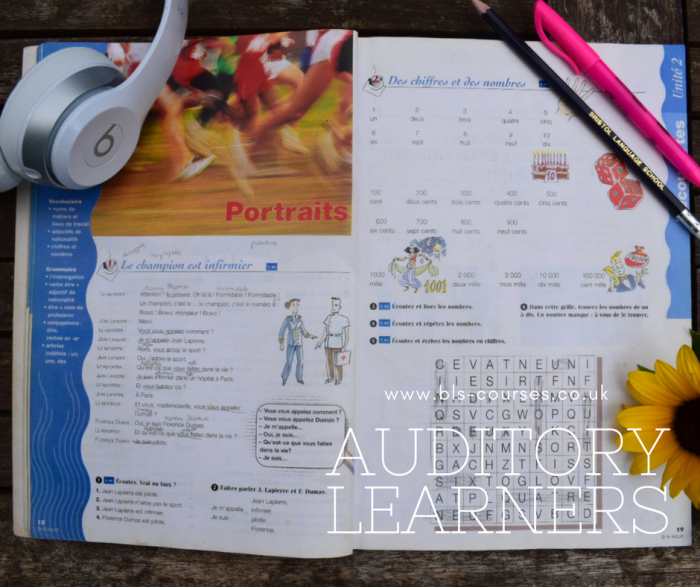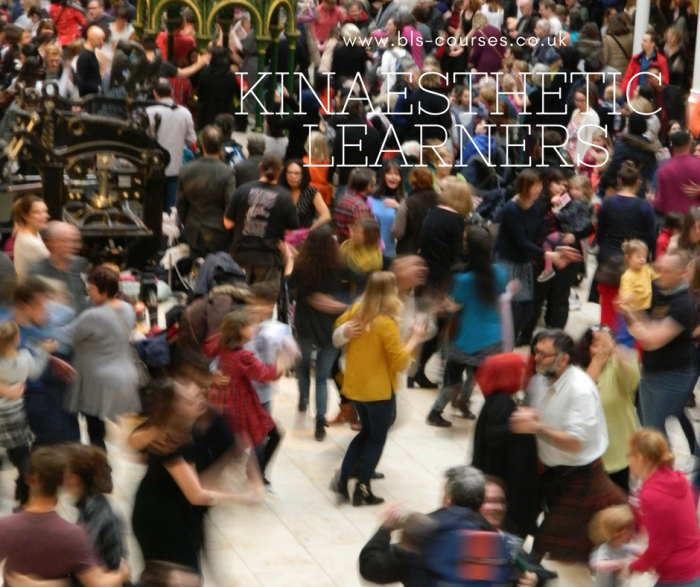Everyone can learn a new skill, and everyone can learn a new language – but did you know that different people learn in different ways? Not all people’s learning techniques are the same. The type of learner you are depends on how your brain is wired. The categories of learner are: visual learner, auditory learner, kinaesthetic learner. A visual learner learns best if they see something written down or represented visually; an auditory learner retains information best if they hear it and a kinaesthetic learner (from ‘kinaesthesia’: the awareness of the position and movement of the parts of the body by means of sensory organs in the muscles and joints) is a hands-on learner or someone who learns through manual tasks or movement. You might already know what kind of learner you are or you might recognise yourself in one (or more) of the learner profiles as we explore how to harness them in order to learn languages below.
Visual Learners
If you are a visual learner, you will remember things best if you have seen them represented visually. There are a number of ways you could make use of this concept in order to learn a language. If you are listening to a text you could write out the words or read the transcription so you see the words as they are read out. You could draw a spider diagram of related words, e.g. with ‘dairy’ in the middle and ‘cheese’, ‘eggs’, ‘milk’ stemming off from the middle. You could draw a table and put different categories of words (nouns, verbs, adjectives) in the different columns. You could write out words in different colours so the image of them sticks in your mind. You could use flash cards to learn and remember vocabulary – writing them out yourself or buying a set in a bookshop – or finding them or creating them online. You could even draw pictures to represent words – concrete ones like a picture of a lemon to help you remember ‘lemon’ or an abstract picture such as those artists use to represent untranslatable words (you can also use them for words that have literal translations!). You could also do this in the opposite way – creating images out of words that relate to their meanings, such as these.
Auditory Learners
If you are an auditory learner, you need to hear something in order to learn it. You will learn a language best if you listen to it or speak it regularly. You could listen to songs in your chosen language or listen to the radio or audio books. Make a playlist of your favourite songs in your chosen language. You could practise pronouncing words or read books aloud to make sure you hear the words as you read them. You could join a conversation club, look for a language partner in your town or online or join a choir that sings songs in your chosen language. You could watch films in order to practise your listening skills. If you need to learn vocabulary, record yourself reading out the words and listen to the recording several times a week. If you need to learn the spellings of words, sound out each letter and then read out the word as a whole. If you have exercises to complete in a book, read them out as you fill them in.
Kinaesthetic Learners
If you are a kinaesthetic learner, you will learn things best if you use your hands to help you learn them or if you undertake a learning task whilst moving around. A useful way of learning verb endings for a kinaesthetic learner could be to write them on building blocks and then work at piecing the words together to make different tenses of the same verb. You could get a set of words or phonemes to stick on your fridge and have fun writing sentences or whole stories with them. If you want to move your whole body and not just your hands, you could listen to an audio book in your chosen language whilst you are going for a run or working out at the gym. Or you could join a drama group in your chosen language – speaking the words whilst acting a part will help you combine the words with their associated actions.
All-rounder
Of course, some people have more than one learning style or learn best when two or even three of these styles are combined. If you think this might be you, don’t hesitate to give it a go.
Why not find out, and share what kind of learner you are – and your experiences of language learning – in the comments?
Written by Suzannah Young




